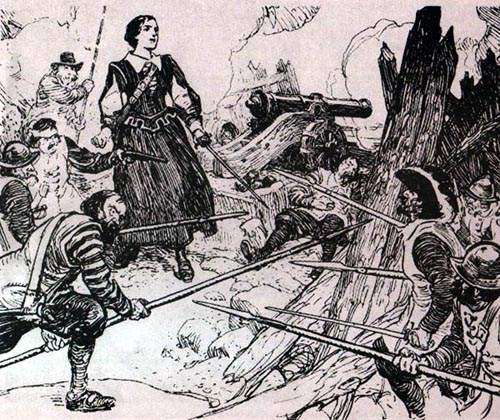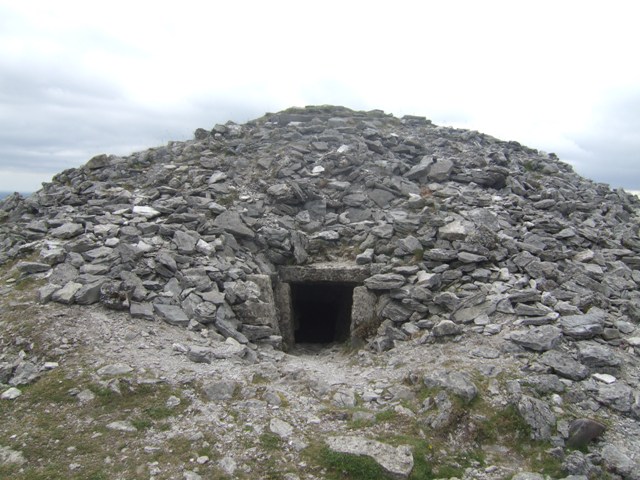|
Fort St. Louis (Shelburne County, Nova Scotia)
Fort Saint Louis was a fort built by Charles de Latour for the French Empire in 1623 in its colony of Acadia. During the Scottish occupation of Port Royal from 1629 to 1632, this fort was France's only foothold in Acadia. The British were unsuccessful in their attempts to capture the fort, and France regained Acadia in 1632. The archaeological remains of the former fort are located in what is today Port La Tour,Shelburne, County Nova Scotia. The site of Fort St Louis was designated a National Historic Site in 1931. The Historic Sites and Monuments Board of Canada placed a cairn and plaque (dated 1937) commemorating the fort at a site in Port La Tour, Nova Scotia Port La Tour is a community in the Canada, Canadian province of Nova Scotia, located in the Municipality of the District of Barrington of Shelburne County, Nova Scotia, Shelburne County. The Historic Sites and Monuments Board of Canada asserts .... References External links Fort St. Louis National Historic Sit ... [...More Info...] [...Related Items...] OR: [Wikipedia] [Google] [Baidu] |
French Colonial Empire
The French colonial empire () comprised the overseas Colony, colonies, protectorates, and League of Nations mandate, mandate territories that came under French rule from the 16th century onward. A distinction is generally made between the "First French colonial empire", that existed until 1814, by which time most of it had been lost or sold, and the "Second French colonial empire", which began with the French conquest of Algeria, conquest of Algiers in 1830. On the eve of World War I, France's colonial empire was List of largest empires, the second-largest in the world after the British Empire. France began to establish colonies in the French colonization of the Americas, Americas, the Caribbean, and French India, India in the 16th century but lost most of its possessions after its defeat in the Seven Years' War. The North American possessions were lost to Britain and Spain, but Louisiana (New France), Spain later returned Louisiana to France in 1800. The territory was then Loui ... [...More Info...] [...Related Items...] OR: [Wikipedia] [Google] [Baidu] |
Acadia
Acadia (; ) was a colony of New France in northeastern North America which included parts of what are now the The Maritimes, Maritime provinces, the Gaspé Peninsula and Maine to the Kennebec River. The population of Acadia included the various indigenous First Nations in Canada, First Nations that comprised the Wabanaki Confederacy, the Acadian people and other French people, French settlers. The first capital of Acadia was established in 1605 as Port-Royal (Acadia), Port-Royal. Soon after, English forces of Captain Argall, an English ship's captain employed by the Virginia Company of London attacked and burned down the Port-Royal National Historic Site, fortified habitation in 1613. A new centre for Port-Royal was established nearby, and it remained the longest-serving capital of French Acadia until the British Siege of Port Royal (1710), siege of Port Royal in 1710. There were six colonial wars in a 74-year period in which British interests tried to capture Acadia, starting ... [...More Info...] [...Related Items...] OR: [Wikipedia] [Google] [Baidu] |
Port-Royal (Acadia)
Port Royal (1605–1713) was a historic settlement based around the upper Annapolis Basin in Nova Scotia, Canada, and the predecessor of the modern town of Annapolis Royal. It was the first successful attempt by Europeans to establish a permanent settlement in what is today known as Canada. Port Royal was a key step in the development of New France and was the first permanent base of operations of the explorer Samuel de Champlain, who would later found Quebec City, Quebec in 1608, and the farmer Louis Hébert, who would resettle at Quebec in 1617. For most of its existence, it was the capital of the New France colony of Acadia. Over 108 years control would pass between France, Scotland, England and Great Britain until it was formally ceded to Great Britain in 1713 due to the Treaty of Utrecht. From 1605 to 1613 the settlement was centred around the habitation on the north side of the Annapolis Basin, while from 1629 onwards it was centred around Fort Anne on the south side, ... [...More Info...] [...Related Items...] OR: [Wikipedia] [Google] [Baidu] |
Nova Scotia
Nova Scotia is a Provinces and territories of Canada, province of Canada, located on its east coast. It is one of the three Maritime Canada, Maritime provinces and Population of Canada by province and territory, most populous province in Atlantic Canada, with an estimated population of over 1 million as of 2024; it is also the second-most densely populated province in Canada, and second-smallest province by area. The province comprises the Nova Scotia peninsula and Cape Breton Island, as well as 3,800 other coastal islands. The province is connected to the rest of Canada by the Isthmus of Chignecto, on which the province's land border with New Brunswick is located. Nova Scotia's Capital city, capital and largest municipality is Halifax, Nova Scotia, Halifax, which is home to over 45% of the province's population as of the 2021 Canadian census, 2021 census. Halifax is the List of census metropolitan areas and agglomerations in Canada, twelfth-largest census metropolitan area in ... [...More Info...] [...Related Items...] OR: [Wikipedia] [Google] [Baidu] |
National Historic Sites Of Canada
National Historic Sites of Canada () are places that have been designated by the federal Minister of the Environment on the advice of the Historic Sites and Monuments Board of Canada (HSMBC), as being of national historic significance. Parks Canada, a federal agency, manages the National Historic Sites program. As of November 2023, there were 1,005 National Historic Sites, 171 of which are administered by Parks Canada; the remainder are administered or owned by other levels of government or private entities. The sites are located across all ten provinces and three territories, with two sites located in France (the Beaumont-Hamel Newfoundland Memorial and Canadian National Vimy Memorial). There are related federal designations for National Historic Events and National Historic Persons. Sites, Events and Persons are each typically marked by a federal plaque of the same style, but the markers do not indicate which designation a subject has been given. For example, the Ridea ... [...More Info...] [...Related Items...] OR: [Wikipedia] [Google] [Baidu] |
Cairn
A cairn is a human-made pile (or stack) of stones raised for a purpose, usually as a marker or as a burial mound. The word ''cairn'' comes from the (plural ). Cairns have been and are used for a broad variety of purposes. In prehistory, they were raised as markers, as memorials and as burial monuments (some of which Chambered cairn, contained chambers). In the modern era, cairns are often raised as landmarks, especially to mark the summits of mountains, and as Trail blazing, trail markers. They vary in size from small piles of stones to entire artificial hills, and in complexity from loose conical rock piles to elaborate megalithic structures. Cairns may be painted or otherwise decorated, whether for increased visibility or for religious reasons. History Europe The building of cairns for various purposes goes back into prehistory in Eurasia, ranging in size from small rock sculptures to substantial human-made hills of stone (some built on top of larger, natural hills). ... [...More Info...] [...Related Items...] OR: [Wikipedia] [Google] [Baidu] |
Port La Tour, Nova Scotia
Port La Tour is a community in the Canada, Canadian province of Nova Scotia, located in the Municipality of the District of Barrington of Shelburne County, Nova Scotia, Shelburne County. The Historic Sites and Monuments Board of Canada asserts that Fort St. Louis (Shelburne County, Nova Scotia), Fort Saint Louis is located at Port La Tour, although this has been disputed. It has also been claimed that the fort at Port La Tour was Fort Lomeron (also known as Fort La Tour) and that Fort St. Louis was located at the neighbouring community of Villagedale, Nova Scotia. French Colony Cape Sable and Eel Bay, Nova Scotia were first settled by the Acadians who migrated from Port-Royal (Acadia), Port Royal in 1620. The French governor of Acadia, Charles de Saint-Étienne de la Tour, Charles de la Tour, colonized Cap de Sable giving it the present name, meaning Sandy Cape. La Tour built up a strong post at Cap de Sable (present-day Port La Tour, Nova Scotia) beginning in 1623, called Fort ... [...More Info...] [...Related Items...] OR: [Wikipedia] [Google] [Baidu] |
National Historic Sites In Nova Scotia
National may refer to: Common uses * Nation or country ** Nationality – a ''national'' is a person who is subject to a nation, regardless of whether the person has full rights as a citizen Places in the United States * National, Maryland, census-designated place * National, Nevada, ghost town * National, Utah, ghost town * National, West Virginia, unincorporated community Commerce * National (brand), a brand name of electronic goods from Panasonic * National Benzole (or simply known as National), former petrol station chain in the UK, merged with BP * National Book Store, a bookstore and office supplies chain in the Philippines * National Car Rental, an American rental car company * National Energy Systems, a former name of Eco Marine Power * National Entertainment Commission, a former name of the Media Rating Council * National Motor Vehicle Company, Indianapolis, Indiana, USA 1900–1924 * National Radio Company, Malden, Massachusetts, USA 1914–1991 * National Supermarke ... [...More Info...] [...Related Items...] OR: [Wikipedia] [Google] [Baidu] |
Military Forts In Acadia
A military, also known collectively as armed forces, is a heavily armed, highly organized force primarily intended for warfare. Militaries are typically authorized and maintained by a sovereign state, with their members identifiable by a distinct military uniform. They may consist of one or more military branches such as an army, navy, air force, space force, marines, or coast guard. The main task of a military is usually defined as defence of their state and its interests against external armed threats. In broad usage, the terms "armed forces" and "military" are often synonymous, although in technical usage a distinction is sometimes made in which a country's armed forces may include other paramilitary forces such as armed police. Beyond warfare, the military may be employed in additional sanctioned and non-sanctioned functions within the state, including internal security threats, crowd control, promotion of political agendas, emergency services and reconstruction, pro ... [...More Info...] [...Related Items...] OR: [Wikipedia] [Google] [Baidu] |
Buildings And Structures In Shelburne County, Nova Scotia
A building or edifice is an enclosed structure with a roof, walls and windows, usually standing permanently in one place, such as a house or factory. Buildings come in a variety of sizes, shapes, and functions, and have been adapted throughout history for numerous factors, from building materials available, to weather conditions, land prices, ground conditions, specific uses, prestige, and aesthetic reasons. To better understand the concept, see ''Nonbuilding structure'' for contrast. Buildings serve several societal needs – occupancy, primarily as shelter from weather, security, living space, privacy, to store belongings, and to comfortably live and work. A building as a shelter represents a physical separation of the human habitat (a place of comfort and safety) from the ''outside'' (a place that may be harsh and harmful at times). buildings have been objects or canvasses of much artistic expression. In recent years, interest in sustainable planning and building practi ... [...More Info...] [...Related Items...] OR: [Wikipedia] [Google] [Baidu] |






